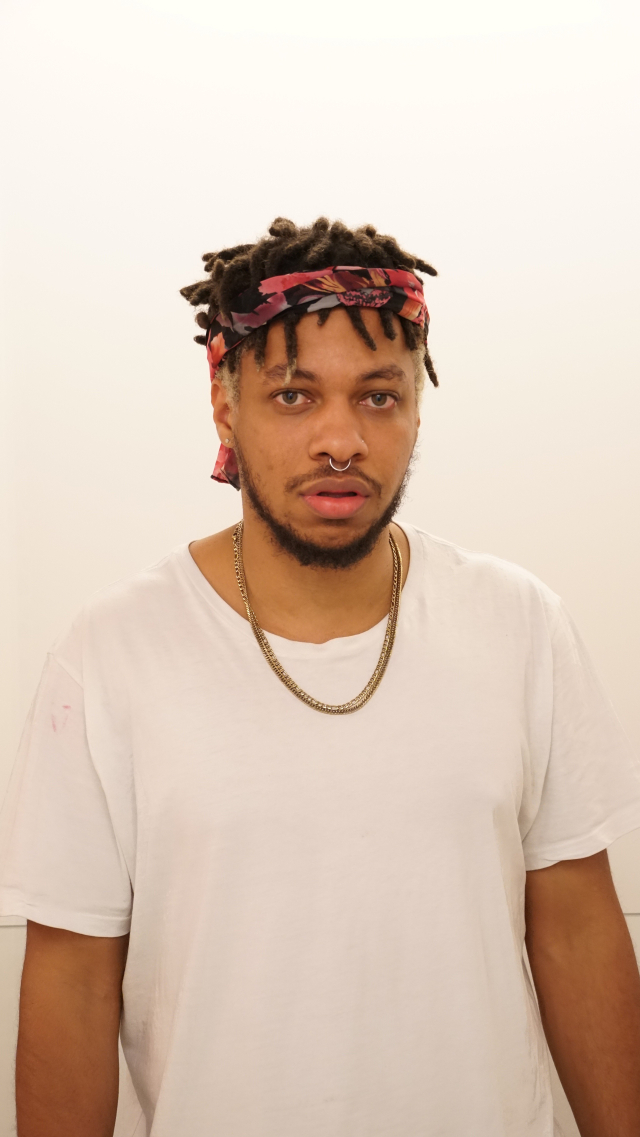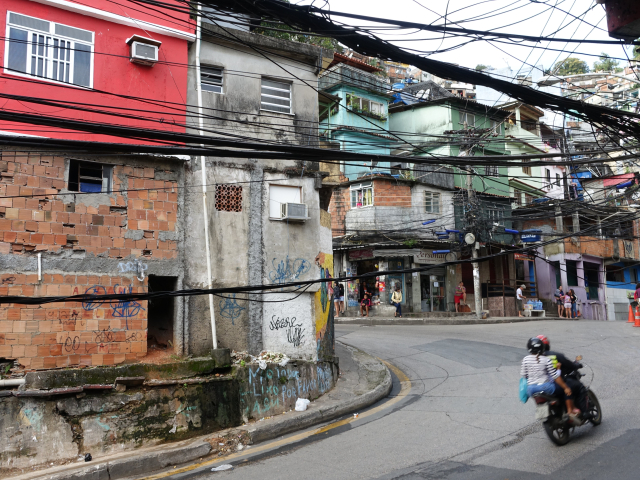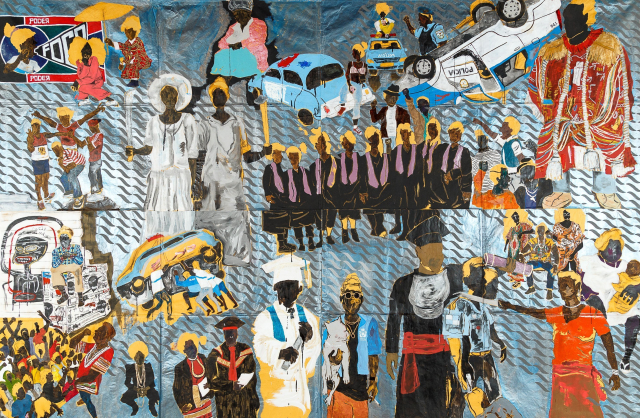Maxwell Alexandre: rising of a Brazilian idol
The first main institutional exhibition of artworks by Maxwell Alexandre is about to open at MAC Lyon. Here some insights to better understand his potentialities.
Maxwell Alexandre is currently in Lyon, preparing for his upcoming exhibition at the prestigious Musée d’art contemporain of that city. The first international show of the 28 years old Rio-born artist is also his first institutional solo exhibition – a feat that is in tune with the speed of his skyrocketing career within the arts. Up until a few years back, Alexandre was a professional skater, a vocation which he indulged – and was quite successful in – for ten years. His breakthrough in the art world happened in August 2017 with the exhibition Carpintaria For All at Fortes d’Aloia & Gabriel’s outpost in Rio.

The show was set as an open call, welcoming all sort of production in a ‘first come, first served’ regime. The only rule is that the artworks had to pass through their front door. Alexandre arrived with a 3 x 5 metres painting rolled under his arm; it certainly passed through the door, but the gallery’s directors had to ditch the wall text at the entrance to fit the artwork. From that moment on, the excellency of his paintings have aroused as much curiosity as Alexandre’s very background. Born in Rocinha – Rio de Janeiro’s largest favela – to a humble family, he came across contemporary art aged 22, while studying Design at Pontifícia Universidade Católica do Rio de Janeiro (PUC-Rio). Though he had showed skills as a draughtsman from a tender age – inspired by comics and cartoons, even selling his creations at his school – it was at that point that he started to paint, at first in the abstract style.


Maxwell Alexandre and A Rocinha
‘I’ve started to paint with materials that were at hand’, he tell us. ‘They are more rudimentary materials, that were or still are part of my daily life’. Indeed, his compositions – often with large dimensions and rather rich in details – may have anything from brick, latex and wax to acrylic, pastel or oil painting; commonly all at once. His motifs are nearly exclusively related to the quotidian life of Rocinha: the interaction between policeman and the population (which is often an authoritarian one), mothers with children, ostentation with cars and jewellery and so forth. They also contain references to well-known black icons, such as Jean-Michel Basquiat, Nina Simone or James Brown. His colours are vivid, his figures – as of himself – empowered and proud. We ask him if he thinks that this recent path of international travels will somehow influence his style. He says it’s too early to tell, ‘materially speaking. But in the realm of ideas, they are brewing’.


Maxwell Alexandre, the Pardo é papel series
It certainly is a lot to digest. After Carpintaria For All, Alexandre was selected for Abre Alas 14, the curated group show devoted to emerging artists which A Gentil Carioca has been organising every year since 2005. The Carioca gallery started to collaborate with Alexandre and managed to bring his work to the attention of important Brazilian institutions – like Pinacoteca and MASP, in Sao Paulo, or MAR, in Rio. They began to both collect and display his work. A Gentil Carioca held Alexandre first solo last Summer (and is currently the only gallery representing the artist); Fortes d’Aloia & Gabriel also invited him to another group show, this time in Sao Paulo. Towards the end of 2018, Alexandre went on his first international trip, in occasion of a month residency at London’s Delfina Foundation. In Lyon, he will be showing paintings from his series Pardo é papel, something that could be roughly translated as Brown is Paper, though the translation doesn’t entirely convey the meaning of the word. Pardo is a Portuguese term used in Brazil to designate mixed race individuals in a sort of friendly way, that is, disguising a dimension of racial prejudice embedded within the term. It is an official nomenclature, used by the Brazilian Institute of Geography and Statistics (IBGE, in Portuguese) when they perform census surveys to determine the society’s constitution. Alexandre plays with the meaning of the word, evoking questions of patronisation that could be traced back to colonial eras while pointing to our enduring struggle to find politically correct terms. The series started in 2017, when the artist found some ‘pardo’ papers, over which he painted self-portraits. It evolved to magnanimous compositions measuring 3.2 x 4.75 metres each. He tell us that not all of the works of the series will be shown, as several of them are now part of public and private collections worldwide.

Maxwell Alexandre and religion
Alexandre’s production is developed as series – beyond the aforementioned one, they bear titles like Reprovados (literally ‘disapproved’, but meaning ‘failed’, often as in a student who’s held back a year). Under these umbrellas, most of the paintings further carry individual titles. These, he tell us, are commonly verses of Rap music by three contemporary black poets from Brazil: Djonga from Belo Horizonte, Baco Exu do Blues from Bahia and BK from Rio de Janeiro. Alexandre’s relationship with music is a strong one, and he has sustained a close collaboration with his fellow carioca BK, having produced the art for one of his albums. Another major influence to him is the Evangelical church, a faith in which he was brought up with but no longer indulges. Yet his entire studio practice and art production are grounded in nomenclatures that are reminiscent from this faith. He explains, ‘our artworks are prayers and our studios are temples’, referring to the space that he shares with friends in Rocinha. A Noiva – or The Bride – is the maximum deity of their church, which has prayers, gospels and even a music album of its own. Noteworthy, the above mentioned artist’s first solo show at A Gentil Carioca in 2018 was called The Christening of Maxwell Alexandre, and included a procession of some paintings from his studio to the gallery space in central Rio; the rapper BK served as a priest.

Ambition and talent are abundant elements in Alexandre’s vocabulary. The fetishisation of his trajectory as an outsider in an environment that is broadly constituted by a strict circle of affluent people will hopefully soon become old news, and people will be able to appreciate his art for what it is: powerful, compelling and fresh.
November 25, 2020
